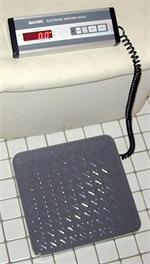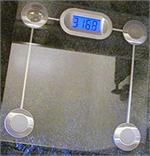A Proper
Fat Tax
By Michael Applebaum, MD, JD, FCLM
There has been a lot of talk
in recent years about a fat tax.
Frequently it involves taxing foods. Specifically, there is talk of taxing
“junk foods,” whatever that means.
This is the wrong approach for a number of reasons. Here are a few:
1.
It is prejudicial. The purpose of such a tax is to dissuade people from
buying certain foods because they presumably somehow lead to overweight/obesity.
Clearly this penalizes the calorically responsible who do not become
overweight/obese while still enjoying these foods. Further it pre-judges (the
hallmark of prejudice) that the calorically responsible will morph into caloric
irresponsibility and need to be “saved.”
2.
It is based on temporary “science.” One week food with nitrites
are junk, the next week, nitrites are good for us. One week
foods rich in
antioxidants are good for us, next week antioxidants
are bad. Designating a food as junk
or healthy is an uncertainty and subject to frequent change.
3.
It is not progressive. Progressive taxes are said to affect richer
persons more than poorer people, i.e., those better able to afford it pay more.
So to design a proper fat tax
it should:
Be non-prejudicial, i.e.,
does not penalize the calorically responsible
Avoid the caprices of food “science”
Be progressive, i.e., impose a greater tax burden on those who are better able
to handle it
To fulfill the criteria
above, it is reasonable and proper to tax the über-articles, clothes and
utensils used by the overweight/obese, such as über-clothes, zoo-level scales,
ton-tested toilets and Nimitz-class wheelchairs, caskets.
This type of tax specifically directs itself at those persons whose actions
resulted in the problem. It is akin to taxing cigarettes. Non-smokers are
relieved of the burden, smokers are not.
Under this fat tax proposal,
calorically responsible persons are relieved of the burden, fat people are not.
The following is a partial list of items that can be taxed. Links to the
websites from which they were taken are provided.
|
The following appeared
at:
http://gizmodo.com/gadgets/gadgets/top-ten-big-fat-products-for-plussized-dudes-209038.php
|
|
|
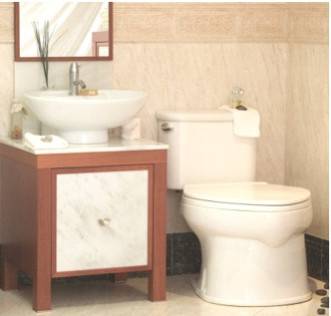
|
From the Great
John Toilet Company, this behemoth pictured above can accommodate up
to 2000 pounds, has an extra wide base with four anchor points and 150%
more contact area on the seat.
|
|

|
Bottom
Buddy, a "toileting aid" for those who can't quite reach all
the way around to that area that most needs cleaning. Plus, lets you
easily dispose of that used toilet paper when you're done.
|
|

|
Siltec
Model WS1000, a heavy-duty electronic platform scale that measures up
to 1000 pounds. This highly accurate, easy to read scale has a 15x15 inch
weighing platform.
|
|

|
Personal
airline seatbelt extenders eliminate the embarrassment of asking a
flight attendant for an extender on the airplane; carry your own and have
it when you want it.
|
|
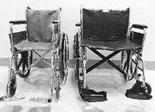
|
Super-sized
wheelchairs: hospitals are now supersized, where the tiny wheel chairs
of the past are widening out to accommodate larger patients. The Sentra EC
extra-large wheelchair has a 24-inch seat width to accommodate those
supersized posteriors.
|
|
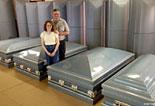
|
The death industry is
even getting into the act, and one of the biggest dealers is the Goliath
Casket Corporation, specializing in 20-gauge steel caskets that are
the size of a large Jacuzzi.
|
|
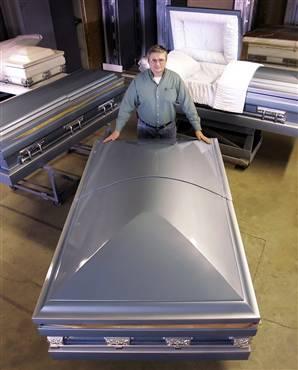
|
Keith Davis of Goliath
Casket poses with the company's largest stock size of casket, 52 inches
wide, at the company's shop in Lynn, Ind. Caskets are normally about 27
inches wide. The company has produced caskets up to 7-feet square.
This one is from:
http://www.msnbc.msn.com/id/12354448/
|
|
The following appeared
at:
http://www.mysizeusa.com/
|
|
|
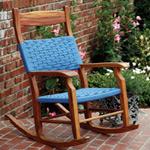
|
The heirloom quality
rocker is has a hand-woven back and seat. Rated in excess of 500 pounds
this chair is built tough. Handcrafted in the renowned tradition of the
original hammocks made on Pawley’s Island, South Carolina since the
1880s.
|
|
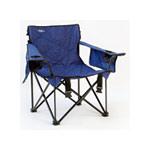
|
The MaxxPerformance
Giants New Custom Telescoping Arms can support 400 pounds per arm. This
provides extra strength when using the arms to help lift your weight out
of the chair. New High Tensile steel frame has been static weight tested
to 1400 Pounds! Can safely hold up to 800lbs of usable weight. This is the
Military grade HumVee of Portable, foldable chairs. If you want a truly
heavy duty chair to take pictures with the kids or grandkids in your lap
this is the chair.
|
Here are links to stores that
sell über-sized items for brontosapiens. These are reasonable places and items
at which to aim the tax:
Mega-Big Box Stores
Casual Male XL - http://www.casualmale.com/store/en_US/index.jsp
Torrid - http://www.torrid.com/torrid/index.jsp?FOLDER%3C%3Efolder_id=2534374302024174&bmUID=1204597907939
Amplestuff - http://www.amplestuff.com/
LivingXL - http://www.livingxl.com/store/en_US/index.jsp
My Size USA.com - http://mysizeusa.com/
You will notice that there
are some items that come in different sizes. For example, these are from http://www.amplestuff.com/scales.aspx:
Similarly, clothing for fat
people comes in different sizes, just as it does for intended-size humans. The
following size chart is from http://www.casualmale.com/store/en_US/static/sizing.jsp:
|
Size
and Measurement Guide
|
|
Clothing
|
|
BIG
(6'3" and under)
|
|
Size
|
Neck
|
Sleeve
|
Chest
|
Waist
|
|

|
|
XL
(1X)
|
17-17
1/2
|
36
1/2-37 1/2
|
46-48
|
42-44
|
|

|
|
2XL
(2X)
|
18-18
1/2
|
37-38
|
50-52
|
46-48
|
|

|
|
3XL
(3X)
|
19-19
1/2
|
37
1/2-38 1/2
|
54-56
|
50-52
|
|

|
|
4XL
(4X)
|
20-20
1/2
|
38-39
|
58-60
|
54-56
|
|

|
|
5XL
(5X)
|
21-22
|
38
1/2-39 1/2
|
62-64
|
58-60
|
|

|
|
6XL
(6X)
|
22-24
|
39-40
|
66-68
|
62-64
|
|

|
|
7XL
(7X)
|
26
|
39
1/2-40 1/2
|
70-72
|
66-68
|
|

|
|
8XL
(8X)
|
28
|
40-41
|
74-76
|
70-72
|
|
|
How
to measure for size.
Neck: Use a soft tape measure to measure
around the base of your neck. Enter your measurements in half-inch
increments, rounding up if necessary.
Chest: (For suit and jacket size.)
Measure over a shirt. Tape should be up under arms and straight
across shoulder blades.
Sleeve: With your elbow bent, measure
from the middle of your back directly below neck--across shoulders
and elbow to the wrist. Total inches is your sleeve length.
Waist: Measure over shirt only at the
point where pants are normally worn.
Inseam: Take a pair of well-fitting
pants of a similar style. Lay them flat across a hard surface or
table. Measure along to the bottom of the pants, from crotch seam to
bottom.
|
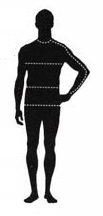
|
|
I posit these examples as a
means for making the fat tax progressive. The fatter you are, the more you pay.
Thus, someone with a 72-inch or 6-foot waistline would be taxed more than
someone with a 60-inch or mere 5-foot waistline.
Or someone who buys a 1000 lb. scale would be taxed higher than someone who buys
the 440 lb. scale.
The technology for applying differential tax rates is readily available and the
process can be easily implemented.
As to why this is progressive, that is also simple.
The question we need to answer is what is a fat person?
Simply put, a fat person is an investor.
Virtually all fat people have made the choice to invest their discretionary
income in energy.
The overweight/obese person invests in food which contains Calories. Calories
are a form of energy. The food investor, adopts a buy-and-hold strategy. He or
she purchases energy as food Calories and lets the energy portfolio accumulate
on his/her body.
One’s body is one's energy investment balance sheet.
The fatter the person, the more he or she has invested in his/her body.
The fatter the person, the more discretionary income he or she spends investing
in his/her body to grow it or maintain it.
Clearly a very, very, very fat person is calorically richer than a very, very
fat one and likely has been spending more discretionary income on maintaining
their overfatness.
Thus, they are better situated, i.e., calorically richer, to pay higher, i.e.,
progressive, taxes.
If it helps you to conceptualize, you could consider this a form of luxury tax on the calorically
rich.
This is the proper way to fashion a fat tax.
Tax the calorically rich, similar to smokers, on those things that they use and leave
the calorically responsible alone.









